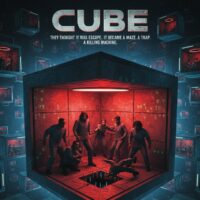Guy Ritchie’s King Arthur: Legend of the Sword: A Comprehensive Review
Released in 2017, King Arthur: Legend of the Sword is Guy Ritchie’s ambitious and unconventional take on the legendary story of King Arthur and Excalibur. Known for his gritty, fast-paced style in films like Lock, Stock and Two Smoking Barrels and Sherlock Holmes, Ritchie infuses King Arthur with a bold mix of action, wit, and fantasy. Starring Charlie Hunnam as Arthur and Jude Law as the villainous King Vortigern, the film stirred a range of reactions, from high praise for its distinctive style to criticism for its chaotic plot. Here’s an in-depth look at the film’s strengths, weaknesses, and the mixed reviews it received upon release.
Plot Summary
Ritchie’s King Arthur: Legend of the Sword reimagines Arthurian legend with a grittier, streetwise Arthur raised in the slums, far from his royal lineage. After the death of his parents, Arthur grows up unaware of his noble heritage. Jude Law’s Vortigern, his uncle, seizes the throne through dark magic and plots to maintain his power by keeping Arthur out of the way. Arthur eventually learns of his royal bloodline when he pulls Excalibur from the stone, setting off a journey of rebellion and self-discovery that leads to a climactic showdown with Vortigern. This revision of the Arthurian tale centers around Arthur’s struggle to embrace his destiny as a king while battling personal and political challenges.
Visuals and Cinematography: A High-Octane Fantasy World
One of the film’s strongest points is its visual style. Ritchie brings a grungy, almost punk-rock aesthetic to Arthur’s world, transforming the familiar medieval setting into a dark, magical landscape filled with towering castles, dense forests, and haunting underwater scenes. The King Arthur world is dark, enchanted, and teeming with mythological creatures, including giant elephants, monstrous snakes, and shadowy figures straight out of a medieval fever dream.
The cinematography, crafted by Daniel Pemberton, is fast-paced and visually engaging, with frenetic action sequences and vivid CGI landscapes. Reviewers often described these sequences as “electrifying” and “mesmerizing,” with high praise for the boldness of the visuals. The film’s final battle, which features Arthur wielding Excalibur in slow-motion, was particularly noted for its ambitious special effects, with some calling it “a surreal action masterpiece.” The rapid editing style, however, divided critics; while some saw it as a dynamic way to tell the story, others found it disorienting.
Casting and Performances: A New Kind of Arthur and a Sinister Vortigern
Charlie Hunnam as Arthur
Charlie Hunnam’s portrayal of Arthur is a modern twist on the legendary hero. With his rough edges, street smarts, and reluctance to claim his royal title, Hunnam’s Arthur feels more like a scrappy anti-hero than a traditional kingly figure. Critics had mixed opinions on his performance: some lauded his ability to bring a rebellious charisma to the role, seeing it as a refreshing departure from the usual stoic depictions of Arthur, while others felt his character lacked depth.
Jude Law as Vortigern
Jude Law’s performance as Vortigern, the power-hungry uncle with a penchant for dark magic, received positive feedback from many. Law portrays the character with a balance of menace and vulnerability, particularly in scenes where his character is haunted by guilt and ambition. His descent into villainy, highlighted by his use of dark magic, struck a chord with many viewers who found his portrayal nuanced and compelling.
Supporting Cast
Djimon Hounsou, Astrid Bergès-Frisbey, and Aidan Gillen round out the ensemble cast, each contributing to Arthur’s journey. Hounsou, as the loyal Bedivere, and Gillen, as the archer Bill, were praised for their strong supporting roles, while Bergès-Frisbey’s portrayal of the Mage received mixed reviews. Some critics appreciated her mystical, enigmatic presence, while others felt she was underdeveloped.
Narrative Style: Guy Ritchie’s Signature Flair
Ritchie’s storytelling style is apparent throughout King Arthur: Legend of the Sword. The film is filled with his signature rapid cuts, witty banter, and non-linear storytelling, making it feel more like a medieval gangster movie than a traditional Arthurian epic. This approach, however, received polarized reactions:
- Positive Reviews: Fans of Ritchie’s style found his approach refreshing and innovative. They appreciated how he brought a sense of modernity to the ancient legend, with clever dialogue and a dynamic flow that kept the narrative exciting. The montage scenes, in which Arthur plans his moves or learns about his past, were particularly well-received by Ritchie enthusiasts, who saw these as a clever twist on the legend.
- Negative Reviews: Some critics, however, felt that Ritchie’s fast-paced editing and abrupt cuts made the plot hard to follow. They argued that the film lacked coherence and sacrificed character development for style. Those unfamiliar with Ritchie’s style were more likely to find the film disorienting, with some even describing it as “style over substance.”
Soundtrack and Score
The film’s soundtrack, composed by Daniel Pemberton, matches the boldness of its visuals. Mixing orchestral themes with heavy drum beats and electric guitars, Pemberton’s score feels epic yet modern, adding an edge to the medieval setting. The score was widely praised as one of the film’s highlights, helping to build the tension and energy in action sequences. Many critics mentioned the soundtrack as one of the most memorable aspects of the film, even those who found other elements lacking.
Box Office Performance and Reception
Despite the high-profile cast and Ritchie’s unique vision, King Arthur: Legend of the Sword struggled at the box office, earning around $148 million globally against a production budget of over $175 million. Critics pointed to several factors for its poor box office performance, including competition from other blockbusters released at the time, such as Guardians of the Galaxy Vol. 2, and a marketing campaign that failed to clearly communicate the film’s tone and approach. Some argued that the film’s departure from the typical King Arthur narrative might have alienated traditional fantasy fans.
Critical Reception: Mixed Reviews from Audiences and Critics
The critical response to King Arthur: Legend of the Sword was mixed, with a Rotten Tomatoes score of 31% and a slightly higher audience score. Here’s a breakdown of the recurring themes in reviews:
- Praise for Visuals and Creativity: Many critics praised the film’s ambitious visual style, describing it as “visually stunning” and “imaginative.” They acknowledged Ritchie’s bold attempt to reimagine the Arthurian legend with an original flair, even if they felt it fell short in certain areas.
- Criticism for Pacing and Plot: Some critics were less kind about the film’s pacing, describing it as “erratic” and “messy.” The fast-cutting scenes and complex narrative made it difficult for some to follow, with some reviewers feeling that too much emphasis was placed on style over a coherent plot.
- Mixed Feelings About Ritchie’s Approach: Ritchie’s decision to blend a medieval setting with modern storytelling techniques divided audiences. Some felt it brought a refreshing twist to a tired genre, while others felt it detracted from the classic nature of the legend.
Audience Reception: Cult Following
While the film didn’t resonate with mainstream audiences, King Arthur: Legend of the Sword has developed a cult following over the years. Fans appreciate the film’s unique blend of medieval fantasy and modern cinematic techniques, viewing it as a misunderstood epic that was ahead of its time. Many fans have called for a sequel or spinoff, hoping to see more of Ritchie’s take on the Arthurian world.
Final Verdict: A Bold, Divisive Epic
In conclusion, King Arthur: Legend of the Sword is a daring reimagining of the Arthurian legend that showcases Guy Ritchie’s distinctive directorial style. With its captivating visuals, fast-paced narrative, and modern twist on a classic tale, it stands out as a unique entry in the fantasy genre. While the film’s divisive style and complex plot may not appeal to everyone, it remains an exciting watch for those willing to embrace its quirks and ambition. Whether seen as an innovative take on Arthurian legend or an over-stylized misstep, King Arthur: Legend of the Sword continues to spark conversation and maintain a place in the ever-growing landscape of fantasy cinema.






